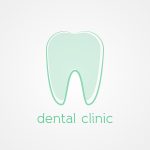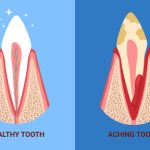Introduction to Cosmetic Bonding
Cosmetic bonding is a popular and affordable dental procedure used to enhance the appearance of teeth. It’s a great option for individuals looking to fix minor imperfections without spending a fortune on more invasive treatments.
What Is Cosmetic Bonding?
Cosmetic bonding involves applying a tooth-colored resin material to the surface of the teeth. A dentist carefully molds and shapes the resin before hardening it with a special light, creating a natural-looking finish that blends seamlessly with your existing teeth.
How Does It Work?
The process of cosmetic bonding is simple and typically completed in a single visit. Here’s what to expect:
- Preparation: Minimal preparation is required, and anesthesia is usually unnecessary unless bonding is being used to fill a cavity.
- Application: The dentist applies a conditioning liquid to help the resin adhere to the tooth.
- Molding & Shaping: The resin is applied, shaped, and smoothed to achieve the desired look.
- Hardening: A special light is used to harden the material.
- Final Touches: The bonded area is polished to match the natural shine of your teeth.
Why Is Cosmetic Bonding Popular?
This procedure has gained popularity among budget-conscious patients due to its affordability, quick application, and non-invasive nature. Here’s how it compares to other cosmetic dental procedures:
| Procedure | Cost | Time Required | Durability | Invasiveness |
|---|---|---|---|---|
| Cosmetic Bonding | $100 – $400 per tooth | One visit (30-60 minutes per tooth) | 3-10 years | Minimally invasive |
| Porcelain Veneers | $900 – $2,500 per tooth | Multiple visits (custom-made) | 10-15 years | Moderately invasive (requires enamel removal) |
| Crowns | $800 – $3,000 per tooth | Multiple visits (custom-made) | 15+ years | More invasive (covers entire tooth) |
The Budget-Friendly Choice
If you’re looking for an effective way to improve your smile without breaking the bank, cosmetic bonding might be the perfect solution. It provides immediate results at a fraction of the cost of other procedures, making it an excellent choice for those who want a quick and affordable fix.
Who Is It Best For?
This procedure is ideal for individuals with minor cosmetic concerns such as:
- Chipped or cracked teeth
- Slight gaps between teeth
- Discolored or stained teeth
- Mildly misshapen teeth
A Quick and Affordable Smile Makeover
With its ease of application and budget-friendly price, cosmetic bonding continues to be a go-to solution for those looking to enhance their smile without significant financial investment. In the next section, well explore the advantages and disadvantages of choosing this procedure over other options.
2. The Pros of Cosmetic Bonding
Cosmetic bonding is a popular option for those looking to improve their smile without spending a fortune. It offers several benefits that make it an attractive choice for budget-conscious individuals. Lets take a closer look at why cosmetic bonding might be the right solution for you.
Affordability
One of the biggest advantages of cosmetic bonding is its cost-effectiveness. Compared to other dental procedures like veneers or crowns, bonding is significantly more affordable. This makes it an excellent option for those who want to enhance their smile without breaking the bank.
Quick Procedure Time
If youre looking for a fast way to improve your teeth, cosmetic bonding is a great choice. The procedure typically takes only 30 to 60 minutes per tooth, meaning you can walk out of the dentist’s office with a transformed smile in just one visit.
Minimal Enamel Removal
Unlike veneers or crowns, which require significant reshaping of your natural teeth, bonding involves very little enamel removal. This makes it a less invasive option and helps preserve the integrity of your natural teeth while still achieving noticeable improvements.
Aesthetic Improvements
Cosmetic bonding can correct various dental imperfections, such as chipped, discolored, or misshapen teeth. Dentists use a tooth-colored resin that blends seamlessly with your natural teeth, providing an improved and natural-looking smile.
Comparison of Cosmetic Bonding vs. Other Procedures
| Feature | Cosmetic Bonding | Veneers | Crowns |
|---|---|---|---|
| Cost | Affordable | Moderate to High | High |
| Procedure Time | Quick (1 visit) | A few visits | A few visits |
| Enamel Removal | Minimal | Moderate | Significant |
| Aesthetic Improvement | Mild to Moderate | Dramatic | Dramatic |
| Lifespan | Around 5-10 years | Around 10-15 years | Around 10-15 years |
A Smart Choice for Budget-Conscious Patients
If youre looking for an affordable way to enhance your smile, cosmetic bonding offers an excellent balance between cost, convenience, and aesthetics. While it may not last as long as veneers or crowns, its quick procedure time and minimal impact on natural teeth make it a worthwhile option for many people.
![]()
3. The Cons of Cosmetic Bonding
While cosmetic bonding is an affordable and quick way to improve your smile, it does come with a few downsides. Before committing to this procedure, it’s important to consider factors like durability, staining, and the need for frequent touch-ups.
Durability Concerns
One of the biggest drawbacks of cosmetic bonding is that it’s not as strong as other dental procedures like veneers or crowns. The composite resin used in bonding can chip or break, especially if you have habits like nail-biting or chewing on hard objects.
Comparison of Durability
| Treatment | Average Lifespan | Resistance to Damage |
|---|---|---|
| Cosmetic Bonding | 3-10 years | Moderate (prone to chipping) |
| Porcelain Veneers | 10-15 years | High (stronger material) |
| Crowns | 10-20 years | Very High (most durable option) |
Susceptibility to Staining
The composite resin used in bonding is more porous than materials like porcelain, which means it can stain more easily. If you frequently drink coffee, tea, red wine, or smoke, your bonded teeth may discolor over time.
Avoiding Stains on Bonded Teeth
- Avoid dark-colored foods and beverages when possible.
- Use a straw for drinks that may cause staining.
- Maintain good oral hygiene and brush regularly.
- SCHEDULE professional cleanings to keep your bonding looking fresh.
The Need for Frequent Touch-Ups
Unlike veneers or crowns that last for many years without needing major maintenance, cosmetic bonding may require regular touch-ups. Over time, the material can wear down, lose its shine, or even detach from the tooth.
How Often Do You Need Touch-Ups?
The frequency of touch-ups depends on lifestyle and oral habits. Some people may need minor repairs every few years, while others might need more frequent maintenance if they grind their teeth or consume acidic foods often.
4. Who Is a Good Candidate?
Cosmetic bonding is an affordable and quick solution for improving the appearance of your smile, but its not the right choice for everyone. Understanding who benefits the most from this treatment and who might need to explore other options can help you make an informed decision.
Ideal Candidates for Cosmetic Bonding
If youre looking for a cost-effective way to fix minor imperfections in your teeth, cosmetic bonding might be a great option. Here are some common situations where bonding works well:
| Candidate Type | Why Bonding Works |
|---|---|
| People with small chips or cracks | Bonding can easily fill in and reshape minor damage. |
| Those with slight gaps between teeth | A quick and affordable way to close small spaces without braces. |
| Individuals with discolored teeth | A good option for covering stains that don’t respond to whitening treatments. |
| Anyone looking for a fast fix | The procedure is usually completed in one visit with minimal preparation. |
Who Might Need an Alternative Treatment?
While bonding is effective for minor cosmetic issues, it may not be the best solution for more significant dental concerns. You may want to consider other treatments if you fall into any of these categories:
- You have large chips or severe damage: Veneers or crowns provide stronger, longer-lasting solutions for heavily damaged teeth.
- You grind your teeth (bruxism): Bonding material isn’t as strong as natural enamel and can wear down quickly under pressure.
- You want a long-term solution: Bonding may require touch-ups or replacements over time, while veneers and crowns offer more durability.
- You have major alignment issues: Orthodontic treatments like braces or Invisalign are better suited for correcting misaligned teeth.
Consulting a Dentist for the Best Choice
The best way to determine if cosmetic bonding is right for you is by consulting a dentist. They can assess your specific dental needs and recommend the most suitable treatment based on your goals, budget, and oral health condition.
5. How to Make Cosmetic Bonding Last Longer
Cosmetic bonding is an affordable and effective way to enhance your smile, but it does require proper care to maintain its appearance and durability. Here are some simple yet essential tips to help extend the lifespan of your bonded teeth.
Maintain Good Oral Hygiene
Just like natural teeth, bonded teeth need regular brushing and flossing to stay in good condition. Poor oral hygiene can lead to plaque buildup, which may weaken the bonding material over time.
- Brush twice a day: Use a soft-bristled toothbrush and non-abrasive toothpaste to avoid wearing down the bonding material.
- Floss daily: This helps prevent plaque from accumulating between teeth and around the bonded areas.
- Use mouthwash: An alcohol-free, antibacterial mouthwash can reduce bacteria without weakening the bonding.
Avoid Staining Foods and Drinks
The composite resin used in cosmetic bonding is more porous than natural enamel, making it more susceptible to staining. Avoid or limit consumption of foods and drinks that can discolor your teeth.
| Foods & Drinks to Limit | Alternative Options |
|---|---|
| Coffee & Tea | Drink through a straw or switch to herbal tea |
| Red Wine | Opt for white wine or rinse with water after drinking |
| Soda & Dark Juices | Choose water or light-colored juices |
| Berries (Blueberries, Blackberries) | Select lighter fruits like apples or pears |
| Soy Sauce & Tomato Sauce | Dilute with lighter sauces or rinse after eating |
Avoid Biting Hard Objects
The bonding material isnt as strong as natural enamel, so its important to avoid activities that could cause chipping or cracking.
- No biting on hard objects: Avoid chewing on ice, pens, fingernails, or hard candies.
- Cut food into smaller pieces: If you eat tough foods like apples or crusty bread, slice them first instead of biting directly into them.
- If you grind your teeth: Consider wearing a night guard to protect both your natural teeth and bonded areas.
Schedule Regular Dental Check-Ups
Your dentist plays a key role in keeping your cosmetic bonding in top shape. Regular visits allow them to check for any signs of wear or damage and make necessary touch-ups before problems worsen.
- Visit every six months: Routine cleanings help remove plaque and stains that can dull the bonding material.
- Mention any issues early: If you notice rough edges, discoloration, or minor chips, let your dentist know as soon as possible.
- Avoid DIY fixes: Never try to repair chipped bonding at home—professional care ensures the best results.
The Key to Long-Lasting Cosmetic Bonding
Taking care of your bonded teeth doesn’t have to be complicated. With good oral hygiene, mindful eating habits, and regular dental visits, you can keep your smile looking great for years while staying within budget!


